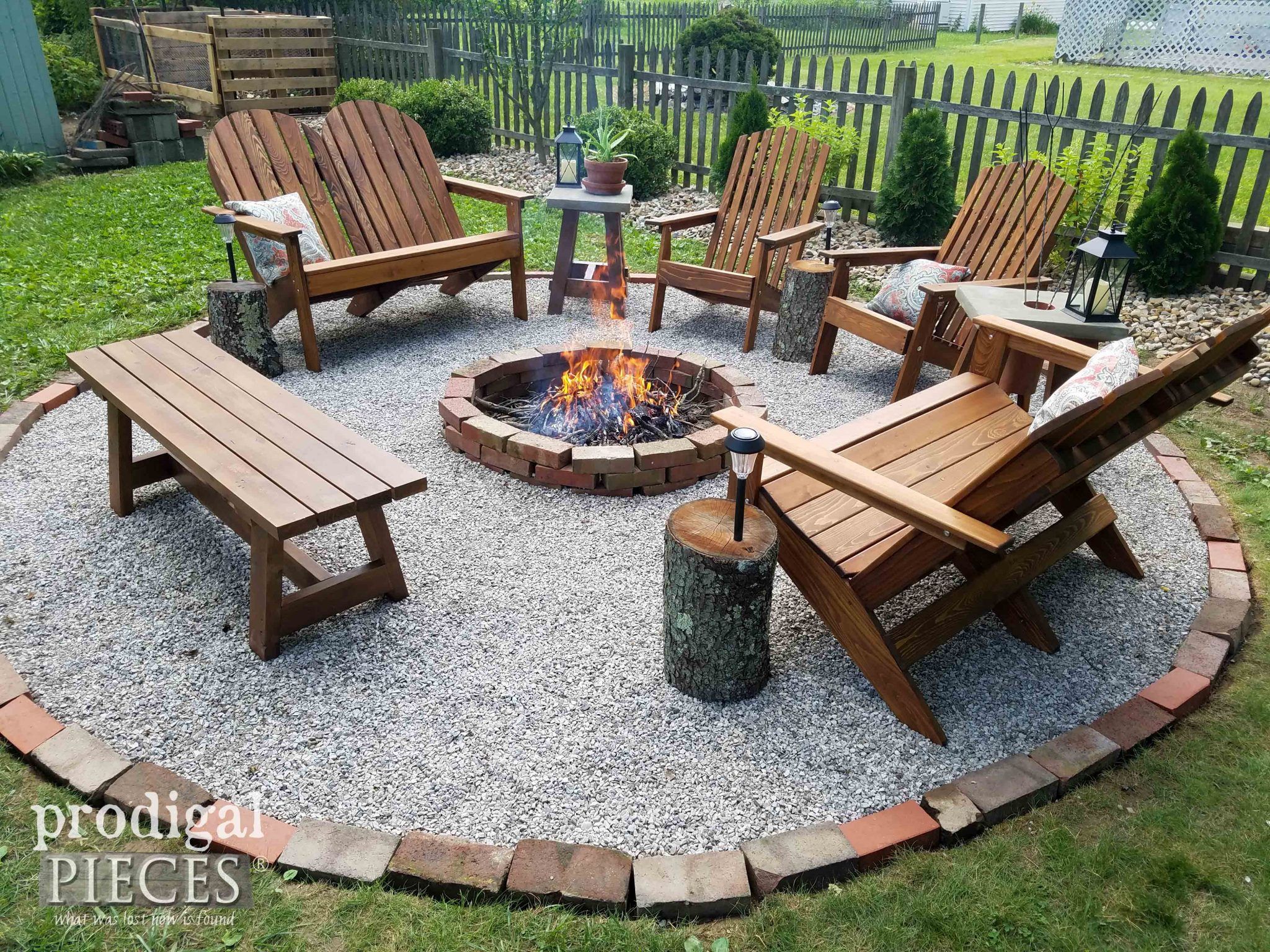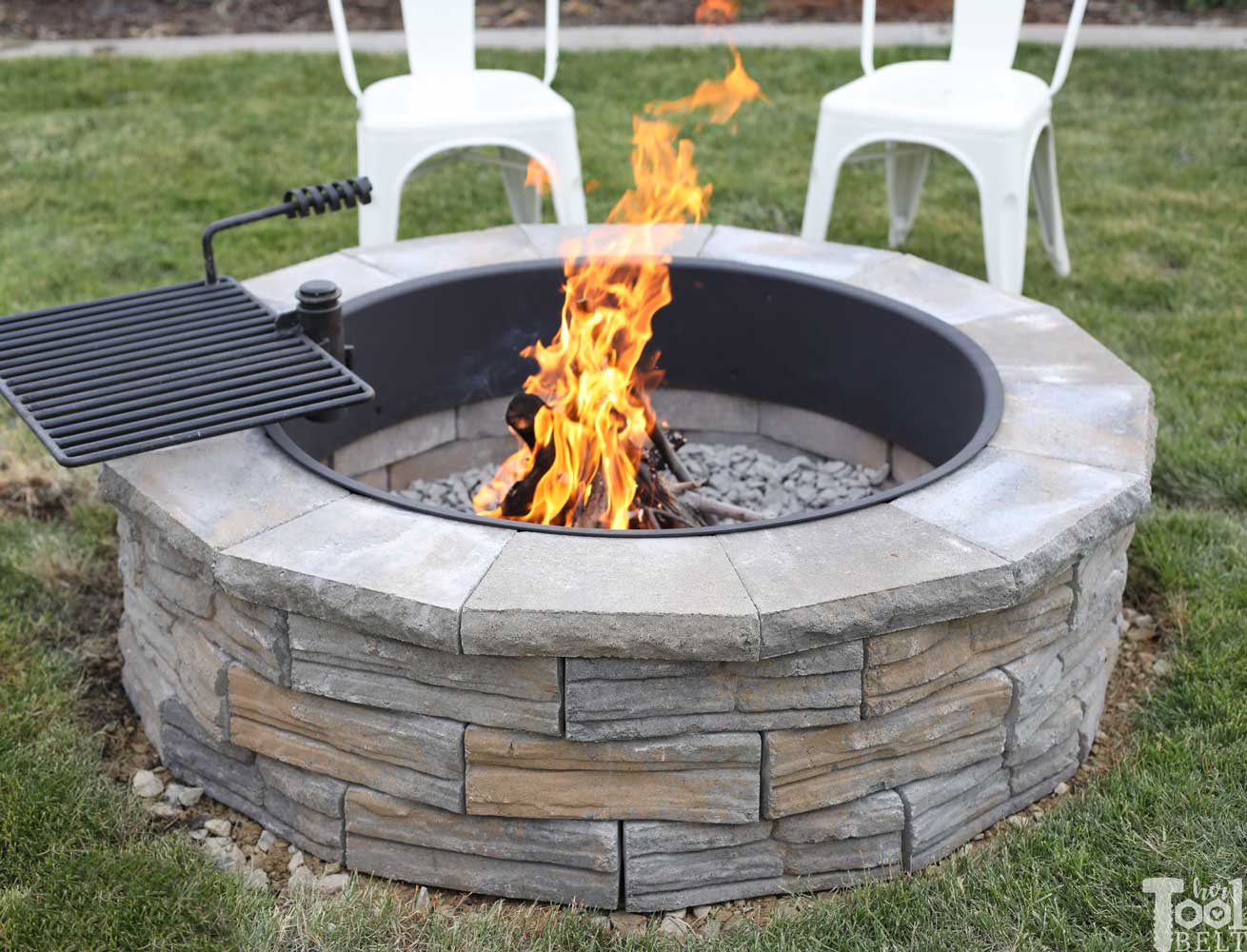Building a backyard fire pit is an excellent way to create a warm and inviting outdoor space for gatherings with friends and family. Whether you’re roasting marshmallows, telling stories, or simply enjoying the ambiance of a crackling fire, a fire pit can transform your backyard into a cozy and memorable destination.
In this guide, we’ll cover everything you need to know to build a backyard fire pit that is both safe and stylish. From choosing the right location and materials to constructing the pit and managing the fire, we’ll provide step-by-step instructions and expert tips to help you create the perfect outdoor oasis.
Fire Pit Design and Planning: Building A Backyard Fire Pit
Before embarking on your backyard fire pit adventure, careful planning and design are crucial to ensure a safe, enjoyable, and aesthetically pleasing experience. Understanding the different types of fire pits, selecting the optimal location, and adhering to local regulations are essential considerations for a successful fire pit installation.
Types of Fire Pits
- Above-Ground Fire Pits:Resting on the ground’s surface, these pits offer portability and ease of installation. They come in various materials, including metal, concrete, and stone.
- In-Ground Fire Pits:Constructed by digging a pit in the ground, these fire pits provide a more permanent and rustic ambiance. They are typically made of stone, brick, or concrete.
- Portable Fire Pits:Designed for easy relocation, portable fire pits are lightweight and compact. They are often made of metal and can be used on patios, decks, or even while camping.
Location Considerations
Choosing the right location for your fire pit is paramount for safety and aesthetics. Consider the following factors:
- Safety:Maintain a safe distance from trees, shrubs, and any flammable materials. Ensure the fire pit is situated away from high-traffic areas.
- Aesthetics:Integrate the fire pit seamlessly into your backyard landscape. Consider the surrounding vegetation, hardscaping, and overall design scheme.
- Convenience:Accessibility is key. Choose a location that is easily accessible for tending the fire and transporting firewood.
Permits and Regulations
In many areas, obtaining a permit is required for the construction and use of a fire pit. It is crucial to check with your local authorities to determine the specific regulations and safety measures that apply to your property.
Materials and Construction

The selection of materials for your fire pit depends on factors like durability, cost, and aesthetics. Here’s an overview of popular materials and construction methods:
Bricks
- Durable and fire-resistant, providing longevity.
- Versatile, allowing for various designs and shapes.
- Relatively inexpensive and readily available.
Stones, Building a backyard fire pit
- Natural and aesthetically pleasing, blending well with outdoor surroundings.
- Durable and can withstand high temperatures.
- Requires careful selection and arrangement for stability.
Metal
- Lightweight and portable, suitable for smaller fire pits.
- Heats up quickly and efficiently.
- Can be prone to rust and requires regular maintenance.
When constructing a fire pit, safety precautions are paramount:
- Choose a level and stable location away from flammable materials.
- Create a fire pit base of non-combustible material like gravel or sand.
- Build the fire pit walls with sufficient height and thickness to contain the fire.
- Leave an opening for airflow and fuel feeding.
Firewood and Fuel Management

To ensure a safe and enjoyable fire pit experience, it’s crucial to understand the types of firewood and fuel management techniques. This section will provide guidance on choosing the right firewood, storing and seasoning it properly, and building a fire for optimal burning.
Types of Firewood
- Hardwoods:Hardwoods, such as oak, maple, and hickory, burn slowly and produce long-lasting embers. They are ideal for extended burn times and provide a consistent heat source.
- Softwoods:Softwoods, such as pine, cedar, and fir, ignite easily and burn quickly. They produce more flames and sparks, making them suitable for starting fires or creating a quick burst of heat.
- Seasoned Firewood:Seasoned firewood has been dried for at least six months, reducing its moisture content. This results in cleaner burning, less smoke, and higher heat output.
Storing and Seasoning Firewood
Proper storage and seasoning of firewood are essential for optimal burning. Stack firewood in a dry, well-ventilated area, off the ground to prevent moisture absorption. Allow ample airflow between logs to promote drying.
Building a Fire in a Fire Pit
To build a successful fire in a fire pit, follow these steps:
- Create a Base:Start by placing a layer of dry tinder, such as kindling, newspaper, or dry leaves, in the center of the fire pit.
- Add Kindling:Build a teepee-shaped structure with small pieces of kindling around the tinder.
- Introduce Small Logs:Once the kindling is burning, gradually add small logs around the base.
- Build the Fire:As the small logs catch fire, add larger logs to build the desired fire size.
- Maintain Airflow:Ensure there is adequate airflow by stacking logs loosely and leaving space between them.
Fire Pit Accessories and Safety Features

Enhance your fire pit experience with practical accessories and prioritize safety measures to ensure a cozy and responsible gathering.
Fire Pit Accessories
Elevate your fire pit with essential accessories that enhance functionality and ambiance:
- Grates:Elevate firewood for optimal airflow, promoting efficient combustion and minimizing smoke.
- Screens:Prevent sparks and embers from escaping, safeguarding your surroundings and reducing fire hazards.
- Tools:Fire pokers, tongs, and shovels facilitate safe and effortless fire management.
Fire Safety
Fire safety is paramount for a responsible and enjoyable fire pit experience. Implement these crucial measures:
- Proper Extinguishing:Douse the fire thoroughly with water or sand, stirring until all embers are extinguished.
- Emergency Procedures:Keep a fire extinguisher nearby and familiarize yourself with proper evacuation routes.
- Minimize Smoke:Use seasoned firewood and burn it efficiently to reduce smoke production.
- Prevent Sparks:Use a spark screen or wet blanket to prevent embers from escaping.
Conclusive Thoughts

Building a backyard fire pit is a rewarding project that can bring years of enjoyment to your outdoor space. By following the steps Artikeld in this guide, you can create a safe and inviting gathering spot where you can relax, connect with loved ones, and create lasting memories.
